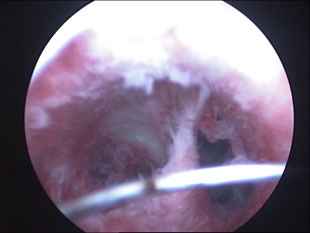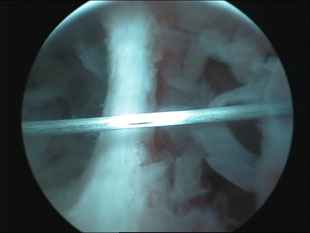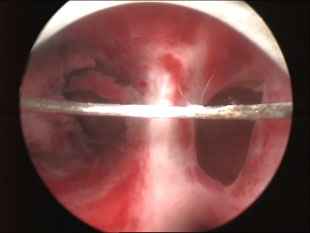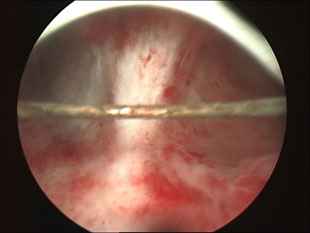Hysteroscopy
Hysteroscopy is an innovative reliable method for examining the intra-uterine cavity. It is a minor safe surgery (infection, uterine bleeding or other side effects occur in less than 1% of cases) that is usually done under light anesthesia (not general anesthesia) and it may be used for diagnosis, treatment or both.
Hysteroscopy is most commonly performed to diagnose and treat abnormal uterine bleeding or abnormally heavy periods. These disorders can be caused by not only hormonal imbalance, but also benign growths such as fibroid tumors or polyps. Other types of conditions that can be diagnosed or treated with hysteroscopy include infertility caused by blockages or adhesions near the openings of the fallopian tubes as well as other disorders; abnormally painful periods; post menopausal bleeding; irregular or unusually light periods; uterine anomalies, including septum; recurrent miscarriages; pelvic pain and removal of intrauterine devices (IUDs).
Diagnostic Hysteroscopy
Hysterectopy can be used to diagnose some problems in the uterus or to confirm the results of other tests. Hysterectopy is mainly used to diagnose the cause of the following problems:
Abnormal Uterine Bleeding: Sometimes women who have longer periods than usual may bleed between periods or bleed at menopause (after the periods have stopped). With hysteroscopy the doctor might find the cause of this abnormal bleeding, which is not possible to detect using other methods.
Infertility: In many cases couples are not able to achieve a pregnancy because the female is having problems with her uterus. For example, defects in the shape or size of the uterus (a uterus divided in two sections), which can be detected with this method, may be the reason for their fertility problem.
Repeated Miscarriages: The possible cause of a miscarriage before 20 weeks may be related to uterus problems, something that can be easily detected with hysteroscopy.
Abnormal Growths: Sometimes uterine growths such as polyps and fibroids can be diagnosed with the hysteroscope. The doctor might also biopsy these growths to find out whether they are cancer or they may become cancer in the future. Adhesions: Bands of scar tissue or adhesions may form inside the uterus. This is called Asherman syndrome. These adhesions may cause infertility and changes in the menstrual cycle. Hysteroscopy can help the doctor locate these adhesions.
Displaced IUDs: An intra-uterine device (IUD) is a small plastic device inserted in the uterus to prevent pregnancy. Sometimes this device moves out of its proper position inside the uterus. It then embeds itself in the uterine wall or the tissue around it. Hysteroscopy is used to locate an IUD.
Operative Hysteroscopy
Operative hysteroscopy can treat many of the abnormalities found during diagnostic hysteroscopy:
- Endometrial Polyp (Uterus Polyp)
- Hysteroscopic Transcervical Resection of the Endometrium (TCRE)
- Intra Uterine Adhesions
- Fallopian Tube - Hysteroscopic View
- Resection of Uterine Septum
- Sub-Mucous Fibroid
- Uterine Septum
Treatment can be performed at the same time as diagnostic hysteroscopy or at a later date. Operative hysteroscopy is similar to diagnostic hysteroscopy except that the hysteroscope used allows operating instruments such as scissors, biopsy forceps, electosurgical or laser instruments, and graspers to be placed into the uterine cavity through a channel in the operative hysteroscope. Fibroids, scar tissue, and polyps can be removed from inside the uterus. Congenital abnormalities, such as uterine septum, may also be corrected through the hysteroscope.
After surgical repair of the uterine cavity, a Foley catheter or intrauterine device (IUD) may be placed inside the uterus to prevent the uterine walls from fusing together and forming scar tissue. Antibiotic and/or hormonal medication may also be prescribed after uterine surgery to prevent infection and stimulate healing of the endometrium (uterine lining). Endometrial ablation, an operative hysteroscopy procedure in which the endometrium is destroyed, can be used to treat excessive uterine bleeding when a hysterectomy is not considered feasible.
Hysteroscopy Procedure and Recovery
Hysteroscopy is best done during the first week or so after a menstrual period. This allows a better view of the inside of the uterus. The whole procedure is usually performed under mild general anesthesia and is done by a gynecologist in the operating room of a hospital or clinic.
Before a hysteroscopy the doctor will put an instrument with smooth, curved blades (speculum) into your vagina. The speculum gently spreads apart the vaginal walls so the doctor can see inside the vagina and the cervix. The vagina is cleaned with a special soap. Then the hysteroscope is placed at the entrance of the vagina and is gently moved through the cervix into the uterus. A liquid or gas is released through the hysteroscope in order to expand the uterus allowing the doctor to have a better view of the uterine cavity and the openings of the fallopian tubes into the uterus. The doctor looks through the hysteroscope at a magnified view of the lining of the uterus. A video screen may be used during the test. If surgery is to be performed a small instrument is inserted through the hysteroscope.
The whole process takes about 30 minutes, unless other procedures are being done. The recovery time after hysteroscopy is approximately a few hours and most women go home at the same day. However, women who have undergone this procedure may have slight vaginal bleeding and cramps for a day or two. In cases of fever, severe abdominal pain and heavy vaginal bleeding a doctor’s appointment is advised.
Anything else you'd like to know about Hysteroscopy?
Ask EmBIO staff free of charge!
Endometrial Polyp
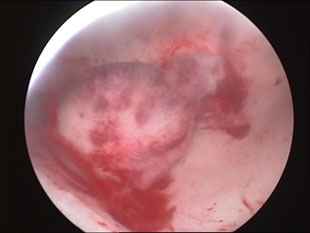
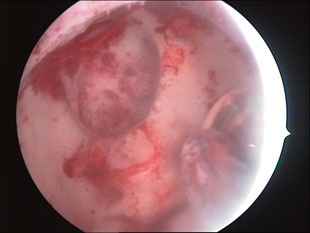
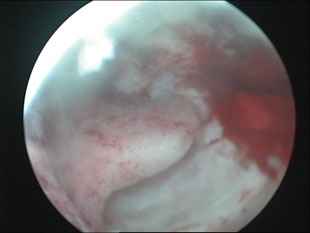
Hysteroscopic Transcervical Resection of the Endometrium (TCRE)
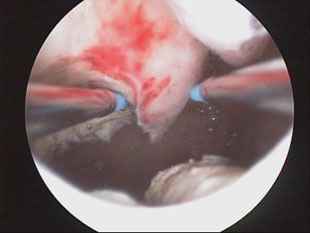
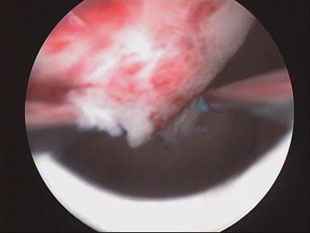
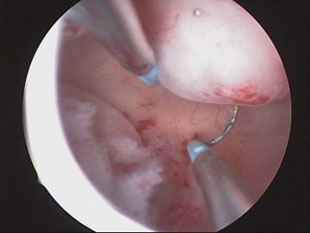
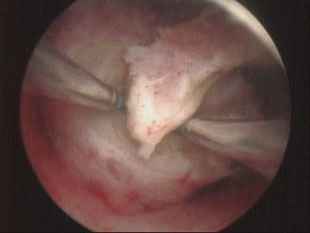
Intra Uterine Adhesions
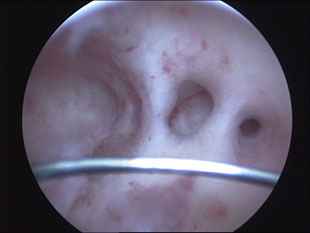
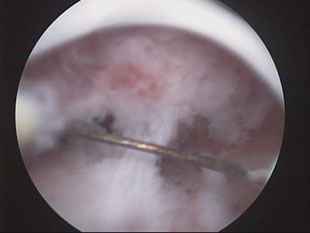
Fallopian Tube - Hysteroscopic View
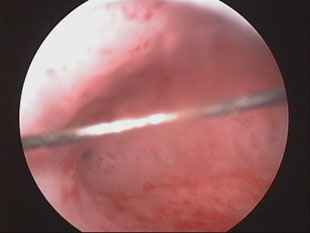
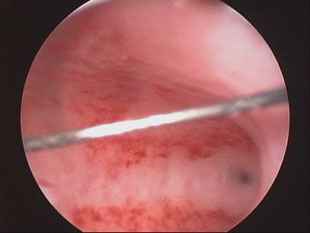
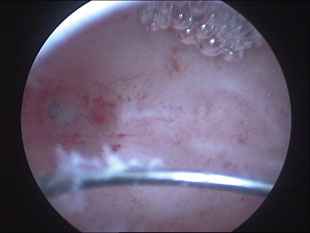
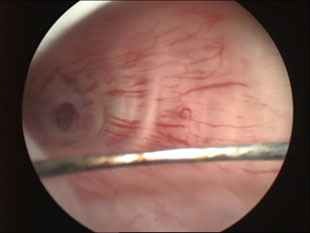
Resection of Uterine Septum
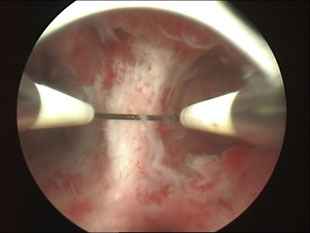
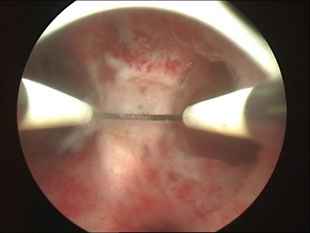
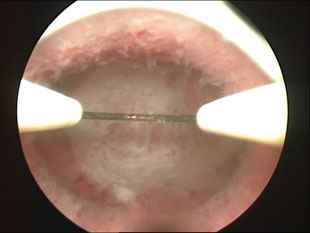
Sub-Mucous Fibroid
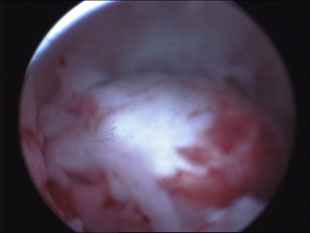
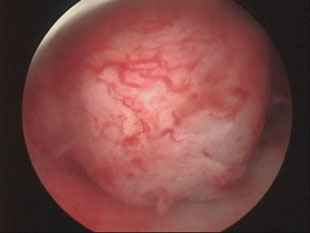
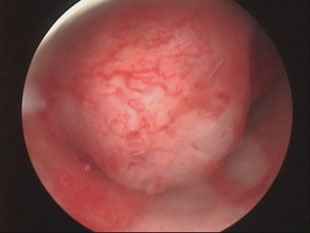
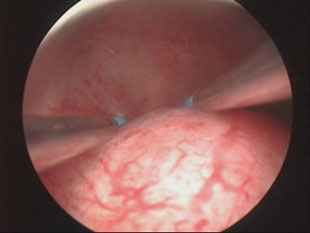
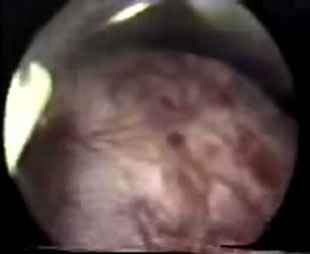
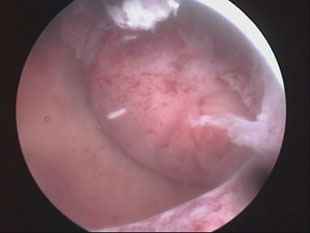
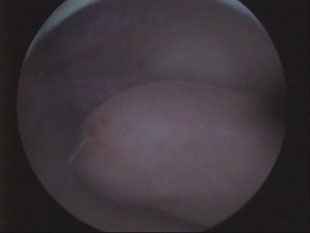
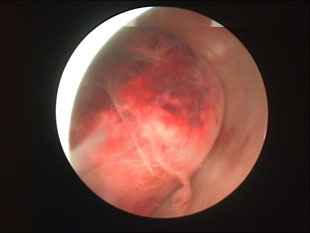
Uterine Septum
